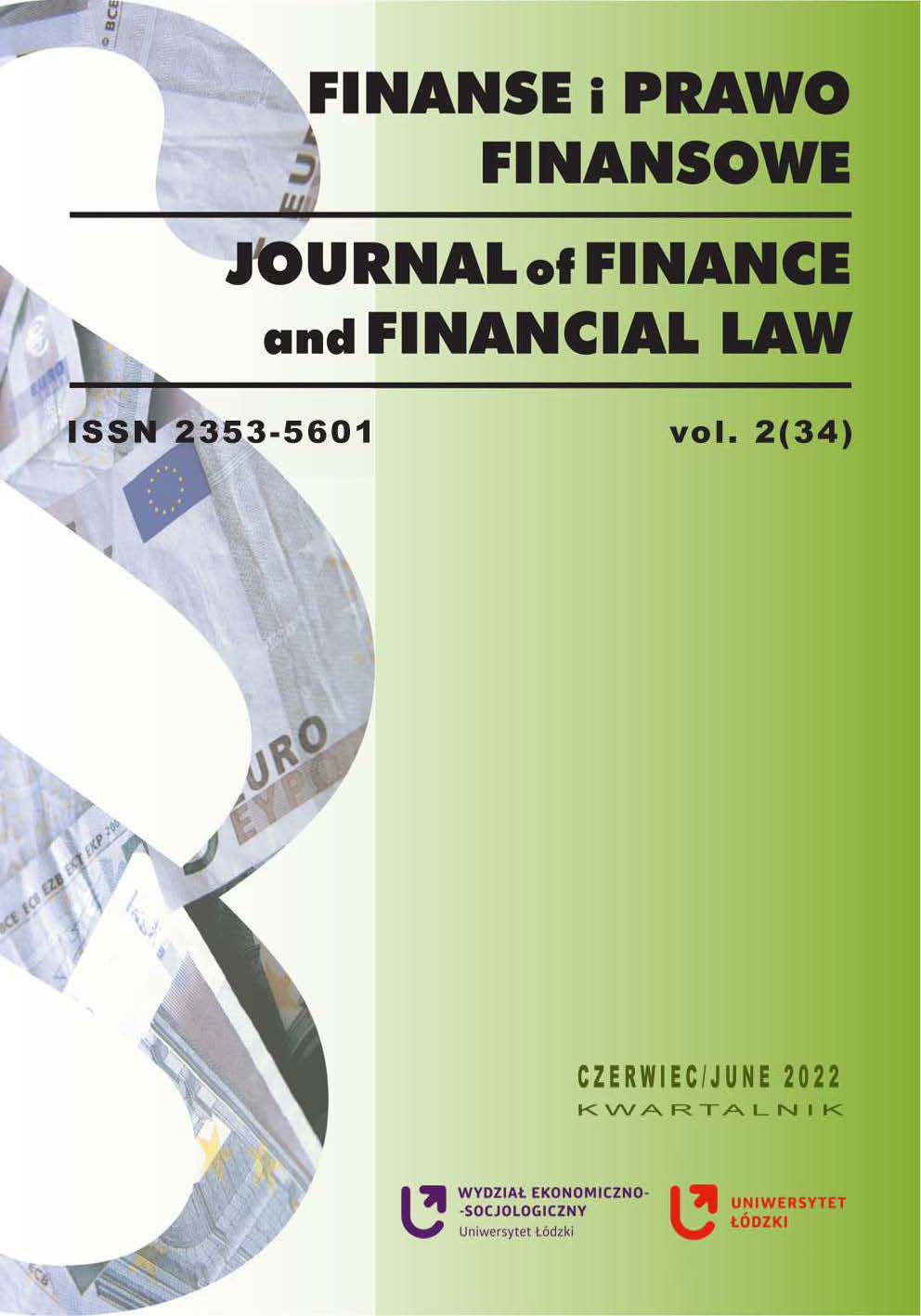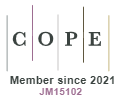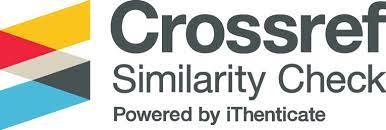Covid-19 cases influencing the Stock Exchange indices on the example of BIST100 in Turkey, NASDAQ in the USA and WIG in Poland
DOI:
https://doi.org/10.18778/2391-6478.2.34.01Keywords:
Covid 19, Stock Exchange, Rate of ReturnAbstract
The purpose of the article/hypothesis: The goal of this paper is to show differences between markets’ reactions to a number of Covid-19 new cases. Stock exchanges and their indices from Turkey, the USA and Poland are analyzed during the first year of the global pandemic. The hypothesis that there are significant differences between markets regarding the reaction to new Covid-19 cases is tested in this research paper.
Methodology: BIST100 Index representing the Istanbul Stock Exchange in Turkey, NASDAQ Composite representing NASDAQ Exchange in the USA and WIG Index representing the Warsaw Stock Exchange in Poland are analyzed in relation to Covid-19 new cases. The correlation analysis with delays of markets’ reactions and panel data OLS regression models are tested with rates of return as dependent variables.
Results of the research: The findings show the immediate negative influence of new cases rates of change on the stock indices rates of return, although there are some differences and similarities between correlation coefficients, especially when the delays in reactions are taken into consideration. The Turkish exchange was reacting immediately to the rates of change of new Covid-19 cases, the US exchange needed more time to adjust, while in Poland the correction was detected after investors’ over-reaction in the first two weeks. The significant difference between the Polish and US markets regarding the correlation is confirmed indicating that the reactions on the global market were not identical. What the findings add to the literature is the evidence of differences and similarities between markets representing different religions, continents, and cultures.
Downloads
References
Ali, M., Alam, N., & Rizvi, S. A. R. (2020). Coronavirus (COVID-19) - An epidemic or pandemic for financial markets. Journal of Behavioral and Experimental Finance, Vol. 27, pp. 1-6, https://doi.org/doi:10.1016/j.jbef.2020.100341
Google Scholar
DOI: https://doi.org/10.1016/j.jbef.2020.100341
Baker, M., & Wurgler, J. (2006). Investor sentiment and the cross‐section of stock returns. The journal of Finance, 61(4), pp. 1645-1680.
Google Scholar
DOI: https://doi.org/10.1111/j.1540-6261.2006.00885.x
Cheema, M. A., Man, Y., & Szulczyk, K. R. (2020). Does investor sentiment predict the near‐term returns of the Chinese stock market?, International Review of Finance, 20(1), pp. 225-233, https://doi.org/10.1111/irfi.12202
Google Scholar
DOI: https://doi.org/10.1111/irfi.12202
Dhall, R., & Singh, B. (2020). The COVID-19 Pandemic and Herding Behaviour: Evidence from India’s Stock Market, Millennial Asia, pp. 366-390. https://doi.org/doi:10.1177/0976399620964635
Google Scholar
DOI: https://doi.org/10.1177/0976399620964635
Elnahas, A., Kim, D., & Kim, I. (2018). Natural disaster risk and corporate leverage. Available at SSRN 3123468, pp. 1-50.
Google Scholar
Espinosa-Méndez, C., & Arias, J. (2021). COVID-19 effect on herding behaviour in European capital markets. Finance Research Letters, Vol.38, pp. 1-6. https://doi.org/doi:10.1016/j.frl.2020.101787
Google Scholar
DOI: https://doi.org/10.1016/j.frl.2020.101787
Goodell, J. W. (2020). COVID-19 and finance: Agendas for future research. Finance Research Letters, Vol. 35, pp. 1-5. https://doi.org/10.1016/j.frl.2020.101512
Google Scholar
DOI: https://doi.org/10.1016/j.frl.2020.101512
Gurav, U., & Kotrappa, D. S. (2020). Impact of COVID-19 on stock market performance using efficient and predictive LBL-LSTM based mathematical model. International Journal on Emerging Technologies, 11(4), pp. 108-115.
Google Scholar
Haacker, M. (2004). The impact of HIV/AIDS on government finance and public services. The macroeconomics of HIV/AIDS, International Monetary Fund, Washington DC pp.198-258
Google Scholar
Harjoto, M. A., Rossi, F., Lee, R., and Sergi, B. S. (2021). How do equity markets react to COVID-19? Evidence from emerging and developed countries. Journal of Economics and Business, pp.1-15.
Google Scholar
DOI: https://doi.org/10.1016/j.jeconbus.2020.105966
Hirshleifer, D., & Hong Teoh, S. (2003). Herd behaviour and cascading in capital markets: A review and synthesis. European Financial Management, 9(1), pp. 25-66.
Google Scholar
DOI: https://doi.org/10.1111/1468-036X.00207
Lee, J. W., & McKibbin, W. J. (2004). Globalization and disease: The case of SARS. Asian Economic Papers, 3(1), pp. 113-131.
Google Scholar
DOI: https://doi.org/10.1162/1535351041747932
Mazur, M., Dang, M., & Vega, M. (2021). COVID-19 and the march 2020 stock market crash. Evidence from S&P1500. Finance Research Letters, Vol, 38, pp. 1-8. https://doi.org/doi:10.1016/j.frl.2020.101690
Google Scholar
DOI: https://doi.org/10.1016/j.frl.2020.101690
Naseem, S., Mohsin, M., Hui, W., Liyan, G., & Penglai, K. (2021). The Investor Psychology and Stock Market Behavior During the Initial Era of COVID-19: A Study of China, Japan, and the United States. Frontiers in Psychology, Vol. 12, https://doi.org/doi:10.3389/fpsyg.2021.626934
Google Scholar
DOI: https://doi.org/10.3389/fpsyg.2021.626934
Ngwakwe, C. C. (2020). Effect of COVID-19 pandemic on global stock market values: a differential analysis. Acta Universitatis Danubius. OEconomica, 16(2), pp. 255-269.
Google Scholar
Ramelli, S., and Wagner, A. F. (2020). Feverish stock price reactions to COVID-19. The Review of Corporate Finance Studies, 9(3), pp. 622-655.
Google Scholar
DOI: https://doi.org/10.1093/rcfs/cfaa012
Ryu, D., Ryu, D., & Yang, H. (2020). Investor sentiment, market competition, and financial crisis: Evidence from the Korean stock market. Emerging Markets Finance and Trade, 56(8), pp. 1804-1816, https://doi.org/doi:10.1080/1540496X.2019.1675152
Google Scholar
DOI: https://doi.org/10.1080/1540496X.2019.1675152
Salisu, A. A., & Sikiru, A. A. (2020). Pandemics and the Asia-Pacific Islamic stocks. Asian Economics Letters, 1(1), pp. 1-5, https://doi.org/10.46557/001c.17413
Google Scholar
DOI: https://doi.org/10.46557/001c.17413
Seven, Ü., and Yılmaz, F. (2021). World equity markets and COVID-19: Immediate response and recovery prospects. Research in International Business and Finance, Vol.56(C)
Google Scholar
DOI: https://doi.org/10.1016/j.ribaf.2020.101349
Sharma, S.S. (2020). A Note on the Asian Market Volatility During the COVID-19 Pandemic. Asian Economics Letters, 1 (2), pp. 1-6, https://doi.org/10.46557/001c.17661
Google Scholar
DOI: https://doi.org/10.46557/001c.17661
Tetlock, P. C. (2007). Giving content to investor sentiment: The role of media in the stock market. The Journal of finance, 62(3), pp. 1139-1168.
Google Scholar
DOI: https://doi.org/10.1111/j.1540-6261.2007.01232.x
Yach, D., Stuckler, D., & Brownell, K. D. (2006). Epidemiologic and economic consequences of the global epidemics of obesity and diabetes. Nature medicine, 12(1), pp.62-66.
Google Scholar
DOI: https://doi.org/10.1038/nm0106-62
Zhang, D., Hu, M., and Ji, Q. (2020). Financial markets under the global pandemic of COVID-19. Finance Research Letters, Vol. 36, pp. 1-6. https://doi.org/doi:10.1016/j.frl.2020.101528
Google Scholar
DOI: https://doi.org/10.1016/j.frl.2020.101528
Downloads
Published
How to Cite
Issue
Section
License

This work is licensed under a Creative Commons Attribution-NonCommercial-NoDerivatives 4.0 International License.














